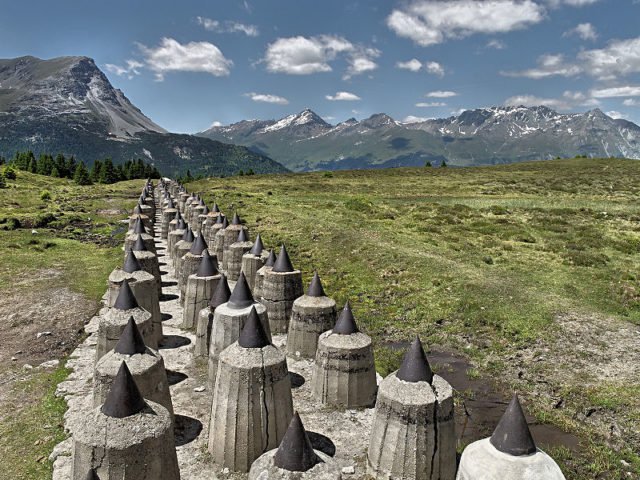Dragon’s Teeth: Used to Slow Down and Channel Tanks Into Killing Zones During WWII
During WWII, opposing troops came up with many ideas on how to slow or disable fast-moving tanks.
One of these ideas was to design obstacles to immobilize tanks by lifting their treads off the ground from below. These traps, called Dragon's Teeth, were first used in WWII, predominantly in Europe.

They are square pyramidal fortifications of reinforced concrete, arranged on the ground in irregular rows. The idea was to slow down and channel tanks into killing zones where they could easily be targeted and destroyed by anti-tank weapons.


The Germans made extensive use of them, and hundreds of kilometers of dragon’s teeth and anti-tank obstacles have been constructed in the Siegfried Line and the Atlantic Wall. France used large numbers of Dragon’s Teeth in the construction of the Maginot Line, and many Dragon’s Teeth were deployed by the British in preparation for a German invasion.




The obstacle often consists of three or four (sometimes up to five) staggered rows with the distance between the tooth in each row being six to eight feet.
The rails project about four feet above ground level and are embedded in concrete. Typically, each “tooth” was 90 to 120 cm (3 to 4 ft) tall depending on the precise model.



To make things more difficult for the enemy, land mines were often placed between the individual “tooth”, and further obstacles were constructed along the lines. Behind these obstacles were pillboxes – a guard post with holes in it through which to fire weapons.

However, in combat, Dragon’s Teeth proved to be far less effective than expected; they were easily destroyed or removed by army engineers and specialized clearance vehicles.
Still, if deployed in the right quantities, (thousands for example) they could stall enemy forces for quite some time.
Due to the huge numbers laid and their durable construction, many thousands of dragon’s teeth can still be seen today.

No comments: